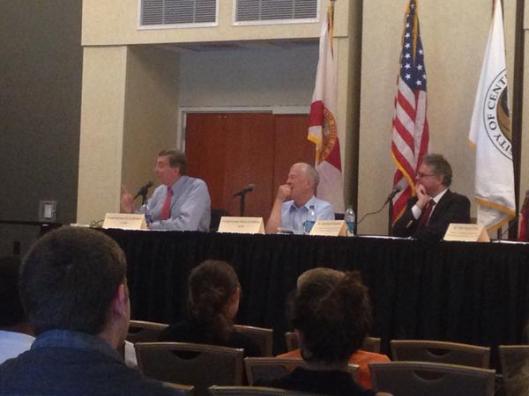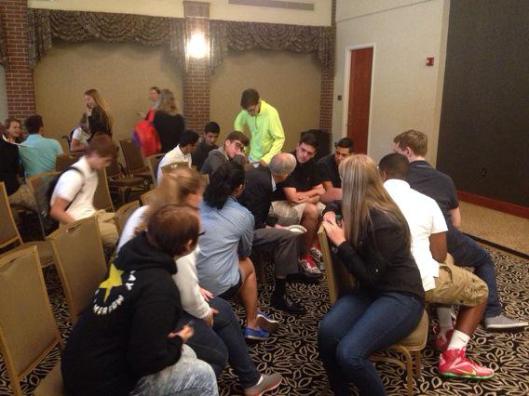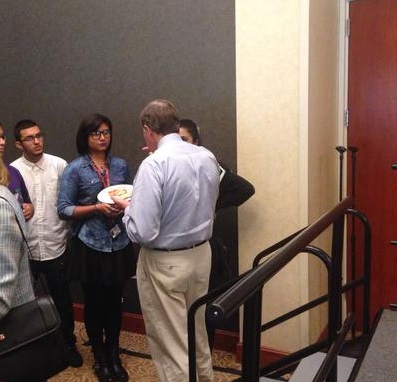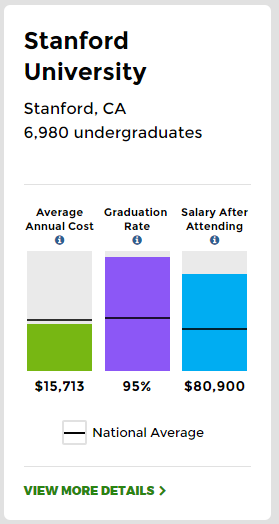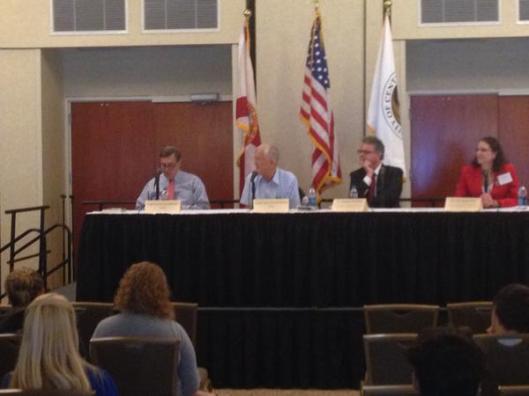
Congressman Gutknecht (R-Minn), Congressman Stallings (D-Idaho), Dr. Knuckey, Dr. Fine await the first question
Today is, of course, Constitution Day. As part of the Lou Frey Institute‘s Constitution Day recognition, I had the distinct pleasure of attending a discussion involving two retired representatives: Congressman Richard Stallings (D-Idaho) and Congressman Gil Gutknecht (R-Minnesota). This session was also attended by about 150 high school students from local schools, and it was such a pleasure and a joy to see how utterly engaged they were today. While the original intent of the day was to discuss the Voting Rights Act, it became devoted to allowing the students to ask questions of the Congressmen about politics, government, society, and the Constitution. Some of the questions that these citizens-in-development asked:
- What do you think of Trump?
- What is your perspective on issues of climate change?
- What might the Founders think about government and politics today?
- Do you believe that Davis has a constitutional right to refuse to provide marriage certificates?
- How can we use the Constitution to ensure gender equality?
- Should Congress and state legislatures abolish the courts if they disagree?
- What advice can you give me about getting involved in politics?
- How can the ‘average joe’ gain the confidence to make decisions about government?
- Should we interpret every word of the Constitution literally?
Now, these are certainly not all of the questions that were asked, but they reflect the thinking of the students, and every question prompted an excellent back and forth between Congressman Stallings and Congressman Gutknecht. It was refreshing to hear such honest debate between friendly but strong partisans, and the fact that they responded so well to the students was wonderful, even if they did not touch on the Voting Rights Act (which was the original intent). These are kids that will remember this for quite a while, and will, I believe, be engaged citizens. We are grateful for all those who participated, and for Professors Jonathan Knuckey and Terri Fine, who helped moderate the event. The fact that students asked so many excellent makes this civic educator proud! Kudos to the students and to the teachers.

